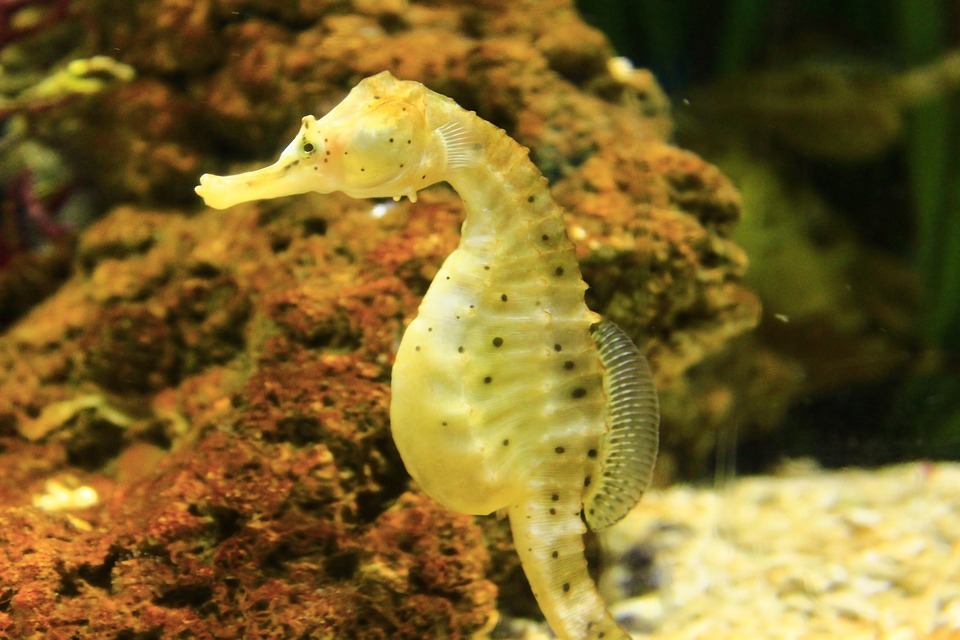In June of every year, Father's Day is cause to celebrate male parental care. Humans fall into a rare group of beings in which the male and the female both exhibit parental care - a behaviour really rather uncommon in the animal kingdom. However, paternal guardianship is present in the aquatic world, where devoted fathers of a number of species may be observed diligently caring for eggs or young, not just alongside the female, but some actually taking on all responsibility themselves.
Without a doubt, the most famous of fishy father figures is the male seahorse. After a lengthy and elaborate courtship ritual, the female seahorse deposits several hundred eggs into the male's brood pouch using her ovipositor - the eggs mixing with seawater and spermatozoa. The male carefully carries the fertilised eggs inside his pouch for a number of weeks as they steadily develop, the pouch providing a safe temperature- and salinity-controlled environment that supplies oxygen, hormones, nutrients, and waste transportation. Once the tiny fully-formed young seahorses emerge from the eggs, the male releases them into the ocean via a series of spectacular muscular contractions.
Moving on to tropical freshwaters, perhaps the best-known example of paternal care is demonstrated by the male Bristlenose catfish (Ancistrus spp.). Bristlenoses are secretive cave spawners, with up to 120 amber coloured eggs being laid/fertilised in a small crevice. Once the female has deposited her eggs and the male has fertilised them, the female then plays no further part in parental care and vacates the breeding site. Meanwhile, the male tirelessly guards the eggs, continually fanning them with his pectoral fins to ensure a good flow of oxygenated water over them. After 5 days or so, the eggs will hatch into wrigglers and they will attach themselves to the décor and tank walls, finally allowing the father fish to have a rest! Meanwhile, the tiny youngsters, exact miniatures of their parents, will absorb nutrients from their yolk sacs over a period of 10-14 days, after which time they will become free-swimming.
However, possibly the most intriguing instance of male parental care is displayed by the diminutive Splash Tetra (Copella arnoldi). When ready to breed, the male will search for a suitable spawning site by repeatedly jumping out of the water until he finds an appropriate area of overhanging vegetation. He will then display to a ripe female, chasing her towards the chosen spawning location. The pair will leap from the water together, held as one by their interlocking ventral fins, and will land against the spawning site - the underside of leaves hanging just above the water's surface. 5-10 eggs are laid by the female and are immediately fertilised by the male. This procedure is repeated several times until between 150-200 eggs have been deposited. The female then takes no further part in caring for the brood. However, the male fish attentively and intermittently tends to the clutch of eggs by flicking his tail and splashing water up onto them to keep them moist. If the eggs have been deposited in more than one location, quite amazingly, he will splash them all in sequence. In between his visits to moisten the eggs, he will hide amongst nearby vegetation. After some 36 hours, the eggs hatch and the fry fall down into the water, at which point the exceptional care from the father ceases.





